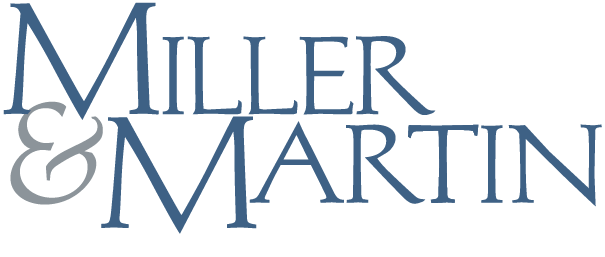The Families First Coronavirus Response Act As Signed Into Law
Miller & Martin PLLC Alerts | March 19, 2020
Authors: Stacie Caraway | Christopher Crevasse | Bradford Harvey
A Summary of the Leave and Tax Credit Provisions
On March 18, 2020, the “Families First Coronavirus Response Act,” (“the Act”) including the Emergency Family and Medical Leave Expansion Act and the Emergency Paid Sick Leave Act, was signed into law by President Trump.
Here is a summary of the key provisions of the new Emergency FMLA Leave Expansion Act, the Emergency Paid Sick Leave Act, and the Tax Credit section of the Act.
Regarding Both the Emergency Family and Medical Leave Expansion Act and the Emergency Paid Sick Leave Act
- Who is Covered?: Private employers with fewer than 500 employees and all public employers
- Tax Credits: Each quarter, employers subject to the new paid leave requirements are entitled to a credit equal to 100% of the qualified paid leave wages they paid. This credit is applied to the tax the employer normally pays for each employee’s Social Security.
- Exemptions:
- Employers of employees who are healthcare providers or emergency responders may elect to exclude such employees from the new paid leave requirements.
- The U.S. Department of Labor (DOL) also is empowered to exempt small businesses with less than 50 employees when “the viability of the business as a going concern would be jeopardized” by having to comply.
- Effective Date: April 1, 2020 until December 31, 2020
Regarding the Emergency Family and Medical Leave Expansion Act
- Provides: 12 weeks of job-protected paid leave for employees who are unable to work or telework so that they may care for their own children if schools are closed or regular paid childcare is unavailable because of a public health emergency relating to the coronavirus as declared by a federal, state, or local authority (This is the only reason this form of leave is permissible.)
- Eligibility: Employees who have been working for at least 30 calendar days
- Rate of Pay:
- After 10 days, employees are paid at two-thirds of their regular rate, capped at $200 per day and $10,000 total per employee. (Tax credits are capped at the same limits.)
- Employees may use accrued personal or sick leave (or the new Emergency Paid Sick Leave benefit described below) during the first 10 days of this new expanded form of FMLA leave.
- Exemption: Employers with fewer than 25 employees do not have to provide job-protection (i.e., do not have to reinstate employees at the end of this new form of FMLA leave) if they can show:
- The employee’s position no longer exists due to “economic conditions or other changes in operating conditions of the employer that affect employment and are caused by the public health emergency during the employee’s period of leave;” and
- The employer made a reasonable effort to restore the employee to a position equivalent (in terms of pay, benefits, and other terms and conditions of employment) to the position he/she held when the leave began.
- The employer also must continue to make reasonable efforts to contact the employee if an equivalent position becomes available during a one-year period beginning from the earlier of the date on which the qualifying need for public emergency leave ends or 12 weeks after the date the employee’s public emergency leave began.
Regarding the Emergency Paid Sick Leave Act
- Provides: 10 days (80 hours) paid sick leave for full-time employees who cannot work or telework due to the following circumstances related to COVID-19 (part-time employees are entitled to the number of hours of paid sick leave which is equal to the number of hours they work on average over a 2-week period):
- Employee is subject to a government quarantine or isolation order related to COVID-19;
- Employee has been advised by a healthcare provider to self-quarantine due to COVID-19;
- Employee is experiencing symptoms of COVID-19 and seeking a medical diagnosis;
- Employee is caring for any individual who is subject to a government quarantine order or healthcare provider quarantine advice;
- Employee is caring for his/her child because schools are closed or their regular paid caregiver is unavailable due to coronavirus precautions; or
- Employee is experiencing any other substantially similar condition as specified by the Secretary of Health and Human Services in consultation with the Secretary of the Treasury and the Secretary of Labor.
- Eligibility: All employees, regardless of length of employment (Note: employees do not have to be paid out this new sick leave benefit upon termination.)
- Rate of Pay: Higher of employee’s regular rate or federal or other applicable local minimum wage
- Payments are capped at $511 per day and $5,110 total per employee. (Tax credits are capped at the same limits.)
- Employees using paid sick leave for one of the last (3) three reasons listed above are compensated at two-thirds of the rate they would otherwise receive, capped at $200 per day and $2,000 total per employee. (Tax credits are capped at the same limits.)
- Employers with Existing Leave Policies:
- An employer may not require an employee to use other paid leave it provides before using the new paid sick leave provided under the Act.
- Employees may choose to use this new form of paid sick leave for one of the covered purposes described above before using any other form of paid leave.
- Nothing bars employers from changing their leave policies after the law was signed.
- This new form of paid sick leave also does not have be provided “in addition” to any other form of paid leave an employer is already providing (that is provided in the amount and that employees are permitted to use for any of the above-described purposes). So, presumably, employers can apply for the applicable tax credits anytime they allow employees to use paid sick leave (up to the maximum limits described above) for one of the above-described purposes.
- Notice: Employers are required to post a notice regarding employee rights under this new paid sick leave law. The Secretary of Labor is supposed to issue a model notice by March 25, 2020.
- Retaliation: Employees also cannot be subject to retaliation for taking leave under this section of this new law, filing a complaint, or instituting a proceeding which seeks to enforce it or who have or are about to testify in such a proceeding.
- Penalties: This section of the Act also is subject to Fair Labor Standards Act (FLSA) wage payment enforcement penalties.
- Replacements: Employers also may not require employees to find (or even help “search for”) replacements to cover the hours during which they are using paid sick leave.
- Accompanying Regulations: The Secretary of Labor has 15 days from the President’s signing of the Act into law to issue accompanying regulations “to assist employers in calculating the amount of paid sick leave provided in this section of the Act” as well as to address the exemptions referenced above. We will provide a summary of those regulations once they are issued.
We Can Help
No doubt, employers will continue to have questions related to this new law. Please contact a member of Miller & Martin's Labor & Employment Practice Group to further discuss how to address the unique challenges this new law presents for your business.
For more information about the ongoing developments related to the COVID-19 pandemic, please visit Miller & Martin's Coronavirus Resources.

